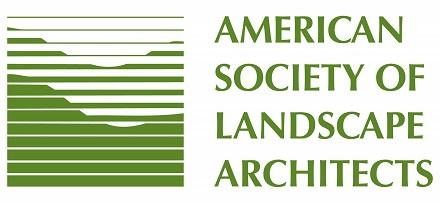
The American Society of Landscape Architects has published a Guide to Universal Design.
Everyone navigates the built environment differently, with abilities changing across a person's lifespan. One billion people, or 15 percent of the global population, experience some form of disability. The global population of people over 65 years of age is expected to double by 2050, totaling 1.6 billion people. Universal design means that everyone, regardless of ability or age, can access and participate in public life.
ASLA's guide provides a comprehensive view of which communities are underserved by the built environment. It also offers a set of new universal design principles that address the needs of deaf or hard of hearing, blind or low vision, autistic, neurodevelopmentally and/or intellectually disabled, and mobility-disabled adults and children, as well as concerns for older adults. These include: accessible, comfortable, participatory, ecological, legible, multi-sensory, predictable, and walkable/traversable.
"This guide serves as an entry point into Universal Design, asking designers to assess our existing design models and projects, and to include disabled folks as stakeholders and experts in the design process," said Alexa Vaugh, Associate ASLA, a landscape designer at OLIN. "As a Deaf landscape designer, I am elated that landscape architects, designers, planners, elected officials, and beyond have started to think about Universal Design."
Landscape architects, urban planners, elected officials, and community advocates can implement these real-world solutions in their communities to ensure that the built environment is accessible to all.
"As our society ages, those of us involved in creating public places must understand the unique challenges that accessing public spaces has for older adults," said landscape architect Brian Bainnson, ASLA, founder of Quatrefoil, Inc. "The simple concepts captured in this guide provide clear, achievable steps that will make our public spaces safer and more accommodating for everyone."
More About the Guide: The ASLA Guide includes hundreds of freely-available case studies, research studies, articles, and resources from non-profit organizations around the world.
Projects and solutions are organized around different types of public space that landscape architects and planners design: neighborhoods, streets, parks and plazas, playgrounds, and public gardens.
New design principles identified ensure that public spaces are:
o Accessible
o Comfortable
o Participatory
o Ecological
o Legible
o Multi-Sensory
o Predictable
o Walkable / Traversable
The guide was developed with the assistance of an advisory group that includes disabled landscape architects, designers, and experts: Danielle Arigoni, director of livable communities, AARP; Brian Bainnson, ASLA, founder, Quatrefoil Inc.; Melissa Erikson, ASLA, principal, director of community design services, MIG, Inc.; Emily O’Mahoney, FASLA, partner, Gentile Glas Holloway O’Mahoney & Associates; Clare Cooper Marcus, Hon. ASLA, professor emerita of architecture and landscape architecture and environmental planning, University of California, Berkeley; Danielle Toronyi, OLIN; Alexa Vaughn, Associate ASLA, Deaf landscape designer at OLIN.

There are no comments
Please login to post comments